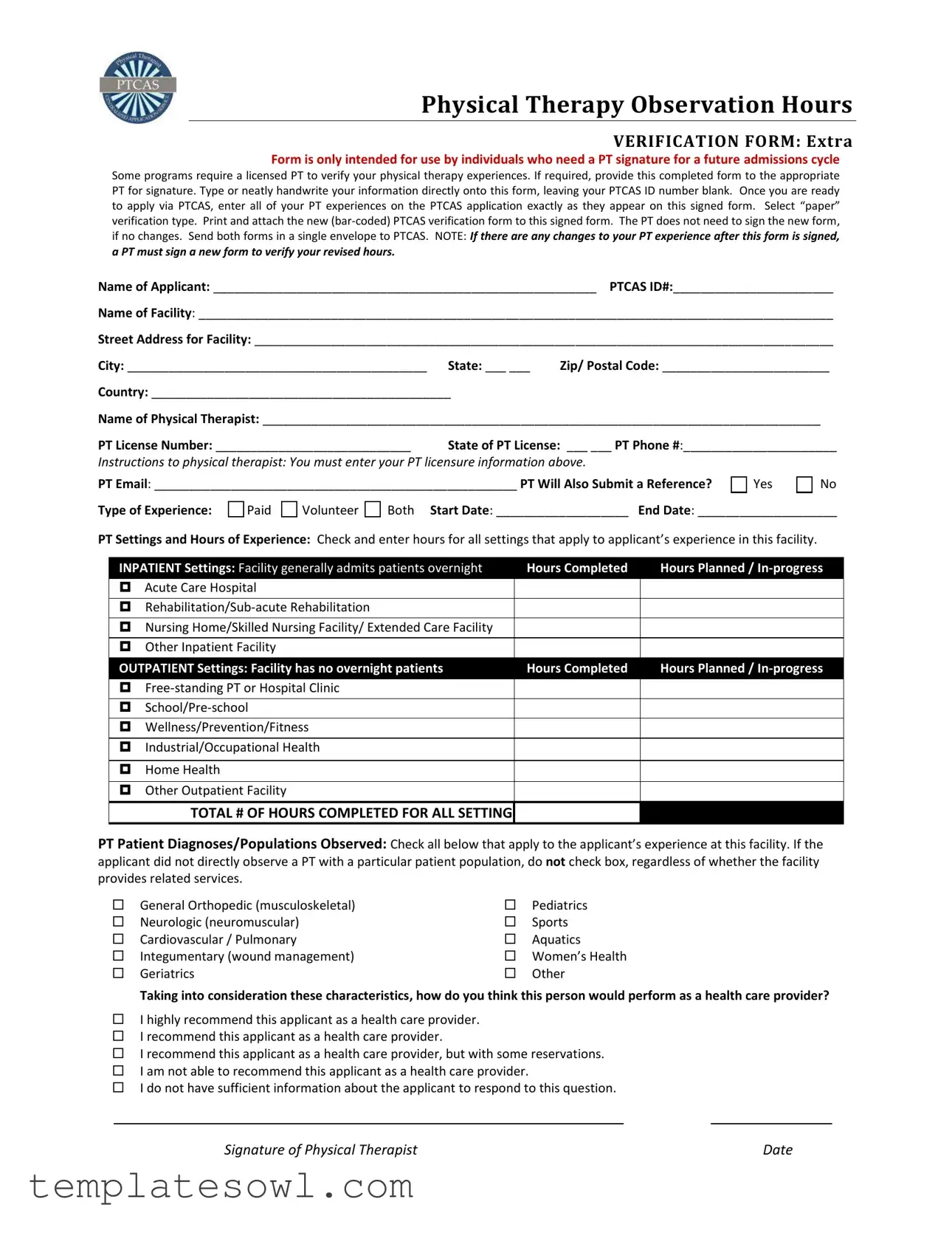Filling out the PTCAS form can be a detailed process, and many applicants make mistakes that can impact their application. Here are ten common errors to avoid.
One frequent mistake is not providing complete information about the physical therapist. The form requires the name, license number, and contact information of the PT. Omitting any of these details can delay the verification process. Every item is essential, so take the time to ensure accuracy.
Another common error is forgetting to leave the PTCAS ID number blank on the verification form. Since this form is separate from your application, it is crucial that you do not enter your PTCAS ID number here. It is a simple mistake, but it can lead to confusion and miscommunication.
Many applicants also fail to select the correct type of experience, such as paid, volunteer, or both. Make sure to check the appropriate box that reflects your experience. This information helps schools understand the nature of your involvement in physical therapy.
Incorrectly filling out the hours section is another issue applicants face. Carefully enter the total hours completed for all settings. Double-check your math; entries should be accurate. Mistakes in this area can raise questions about the extent of your experience.
Some individuals forget to collect all necessary signatures before submitting the form. The PT must sign the verification form, confirming the details of your observation hours. Ensure that this is done to avoid any snags in processing your application.
Submitting the forms in separate envelopes is also a common pitfall. Both the verification form and the PTCAS application should be included in the same envelope. This prevents any potential loss of documentation during transit.
Another mistake includes not updating the form when changes occur in your physical therapy experiences. If there are any modifications in your total hours or settings, a new verification form signed by a PT must be completed. Always keep the information current.
Many applicants overlook the patient diagnoses or populations observed section. If you did not directly observe a PT with a particular patient population, do not check the box. Misrepresenting this information can hurt your credibility.
Sometimes, people neglect to follow the instructions for completing the PT verification form. Read all guidelines carefully before filling out the form. Each instruction is designed to help ensure that your submission is accepted without issues.
Lastly, not providing enough detail about your experience can be a disservice. Avoid vague descriptions. Specifics about your responsibilities and observations can enhance your application, making it stand out to admissions committees.

